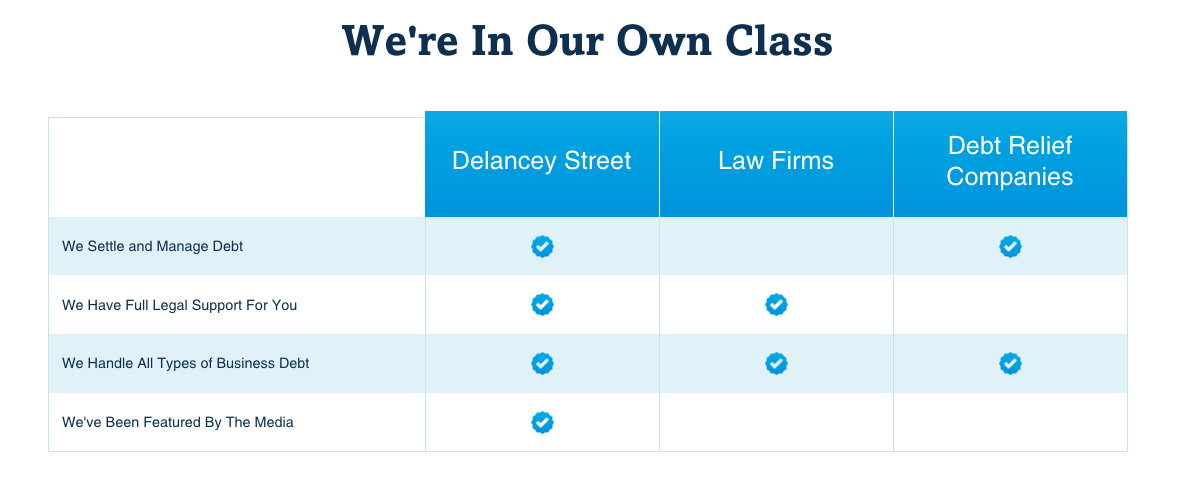What Is a Reaffirmation Agreement? The Comprehensive Guide
Understanding Reaffirmation Agreements in Bankruptcy
A reaffirmation agreement is a legal contract that allows you to keep certain debts after filing for bankruptcy — it essentially “reaffirms” your obligation to pay off that debt. This agreement is made between you (the debtor) and your creditor; it must be approved by the bankruptcy court.Reaffirmation agreements are most commonly used for secured debts like car loans, mortgages, or other loans where collateral is involved. By reaffirming the debt, you get to keep the asset (e.g. your car or house), but you’re also still on the hook for paying back that debt even after bankruptcy.It’s an important decision with major implications, so let’s dive deeper into how reaffirmation agreements work and whether one might be right for your situation.
Why Reaffirm a Debt?
There are a few key reasons why you might want to reaffirm a debt through bankruptcy:
 -
-- To Keep the Collateral – The biggest motivation is usually to prevent repossession or foreclosure on assets like vehicles, homes, furniture, etc. Reaffirming the secured debt allows you to retain possession.
- Maintain Credit History – Reaffirming can help preserve your credit history and rating for that specific debt, which can make it easier to obtain credit down the road.
- Personal Obligation – Some debtors simply feel a moral obligation to repay certain debts, even through bankruptcy.
- Negotiation Tool – In some cases, reaffirming can give you leverage to renegotiate terms like interest rates or payoff amounts with creditors.
However, reaffirming a debt is a double-edged sword – you get to keep the asset, but you’re also still legally obligated to pay back that debt according to the original terms. This can be a heavy burden, especially if your financial situation doesn’t improve after bankruptcy.
The Reaffirmation Process
If you decide to pursue a reaffirmation agreement, here are the typical steps:
- Disclosure Statement – Your creditor must provide disclosures about the current status of the loan and repayment terms.
- Reaffirmation Agreement – You and the creditor execute a written reaffirmation agreement contract.
- Court Approval – The agreement must be filed with the bankruptcy court and approved by a judge.
- Rescission Period – You have 60 days after the agreement is filed to rescind (cancel) the reaffirmation if you change your mind.
The court approval step is critical – the judge has to determine that reaffirming won’t create an “undue hardship” that could force you into bankruptcy again. Factors like your income, expenses, and ability to make payments are considered.If the court doesn’t approve, the debt is simply discharged (eliminated) in your bankruptcy case. But an approved reaffirmation makes you legally liable again, just as if you never filed bankruptcy for that debt.
Pros and Cons to Consider
Like most bankruptcy decisions, there are potential pros and cons to reaffirming debts that require careful evaluation:Potential Pros:
 -
-- Keep possession of collateral property
- Maintain credit history and rating
- Fulfill a personal obligation to repay
- Opportunity to renegotiate terms
Potential Cons:
- Legally obligated to repay the full debt
- Risk of asset repossession if you default again
- Added financial burden after bankruptcy
- Creditor may still raise interest rates
Whether the pros outweigh the cons depends on your unique financial circumstances and priorities. Speaking with an experienced bankruptcy attorney is highly recommended before deciding to reaffirm any debts.
Alternatives to Reaffirmation
If keeping certain secured assets is the goal but reaffirmation seems too risky, there are a couple alternatives to consider:
Redemption – This allows you to pay the current fair market value of an asset’s collateral in one lump sum, rather than the full loan balance. It’s cheaper but requires available funds.
Reaffirmation of Debt – You can attempt to renegotiate the original loan terms with the creditor, such as a lower interest rate or principal balance, then continue making payments under the new agreement.
 -
-Ride Through – In some states, you may be able to keep making payments on a secured debt like a car loan without reaffirming, as long as you’re not in default. However, your personal liability is discharged.Again, it’s wise to consult a local bankruptcy lawyer to understand which options are permitted in your jurisdiction and make the most sense for your situation.
When Not to Reaffirm
While reaffirming can be beneficial in some cases, there are also situations where it may not be advisable:
- Upside-Down Loans – If you owe significantly more than an asset is worth, reaffirming may not make financial sense.
- Income Instability – If your income situation is uncertain, taking on more debt obligations could be very risky.
- High Interest Rates – Reaffirming high interest debts may not be worthwhile if you can’t renegotiate better terms.
- Lack of Equity – For things like underwater mortgages with no equity built up, reaffirmation provides little benefit.
The bottom line is that reaffirming should only be done if you have a stable income and reasonable ability to repay the debt going forward. Don’t put yourself right back in the same financial hole.
 -
-Making the Right Choice
At the end of the day, the decision to reaffirm any debts through bankruptcy should be made very carefully after weighing all the factors. There’s no one-size-fits-all answer.If reaffirmation seems unwise, remember you have other options like redemption, loan renegotiation, or even letting the secured asset go if it’s not worth the debt.But if keeping certain property is important and you’re confident you can manage the payments, a reaffirmation agreement may be the right path. Just make sure to have an experienced bankruptcy lawyer (https://www.federallawyers.com) review your situation and guide you accordingly.The goal of bankruptcy is to get a fresh financial start – reaffirming debts should only be done if it truly improves your long-term prospects, not sets you back again.
Reaffirmation and Your Credit
One of the key considerations around reaffirming debts in bankruptcy is the potential impact on your credit score and history. Let’s take a closer look at this aspect.If you reaffirm a secured debt like a mortgage or auto loan, that debt will generally continue to be reported on your credit after bankruptcy just as it was before. As long as you make all the payments on-time going forward, it can help you rebuild your credit rating.However, if you were delinquent or behind on payments prior to bankruptcy, that negative history could still be reflected on your credit report even after reaffirming. The bankruptcy filing itself will also remain for 7-10 years.In contrast, if you don’t reaffirm a debt, it will likely be reported by the creditor as “included in bankruptcy” or discharged with a $0 balance moving forward. This can help your credit scores bounce back sooner by removing those negative tradelines.So in that sense, reaffirming can be a double-edged sword for your credit. It preserves your history and gives you a chance to recover, but also keeps any previous delinquencies as lingering blemishes.Whether this trade-off is worth it depends on your specific credit situation and goals. If you have a long history of perfect payments on a debt, reaffirming may be more appealing than if you have years of late payments dragging down your scores.
The Reaffirmation Hearing
One critical step in the reaffirmation process that deserves its own spotlight is the reaffirmation hearing before the bankruptcy judge.After you and your creditor execute the written reaffirmation agreement, it must be filed with the court and approved by a judge. This approval hearing is mandatory – the judge cannot simply sign off without it.During this hearing, the judge will review the terms of the agreement and assess whether reaffirming that debt would create an “undue hardship” that could lead you right back into financial distress.Factors they’ll consider include:
- Your current income and expenses
- Your ability to make the required payments going forward
- Whether the collateral is truly necessary (e.g. a car to get to work)
- The total amount of debt being reaffirmed
The judge will likely ask you questions directly about your situation and reasons for wanting to reaffirm. They want to ensure you aren’t being coerced and that you understand the consequences.If the judge determines the reaffirmation would be an undue burden, they have discretion to deny approval of the agreement. In that case, the debt would simply be discharged in your bankruptcy without any further obligation.Having an experienced bankruptcy lawyer represent you at this crucial hearing is highly advisable. They can present evidence and arguments to demonstrate to the court that reaffirming won’t overextend you financially.
The Reaffirmation Rescission Period
Even after a reaffirmation agreement is officially approved by the court, the process isn’t necessarily final. There’s an important 60-day rescission period where you can still back out if you change your mind.Specifically, you have 60 calendar days after the reaffirmation agreement is filed with the court to rescind (cancel) the contract if you decide it’s not in your best interest after all.To rescind during this period, you must notify the creditor in writing that you want to cancel the reaffirmation. As long as it’s done within that 60 day window, the agreement is voided and the debt is treated as discharged in your bankruptcy.This rescission option provides one last fail-safe opportunity to reconsider whether reaffirming is truly affordable and wise for your financial situation moving forward. Perhaps your circumstances changed, or you simply had second thoughts after more reflection.Just keep in mind that once that 60 day period expires, the reaffirmation agreement is permanently binding. So it’s important to be certain about your decision before letting that rescission window close.Having an experienced bankruptcy lawyer review the reaffirmation paperwork can ensure you understand this rescission right and time period. It’s an important final protection for debtors.Overall, the reaffirmation process aims to balance giving debtors a fresh start while also preserving certain property rights when appropriate. The court approval and rescission period are meant as safeguards against undue financial hardship.







